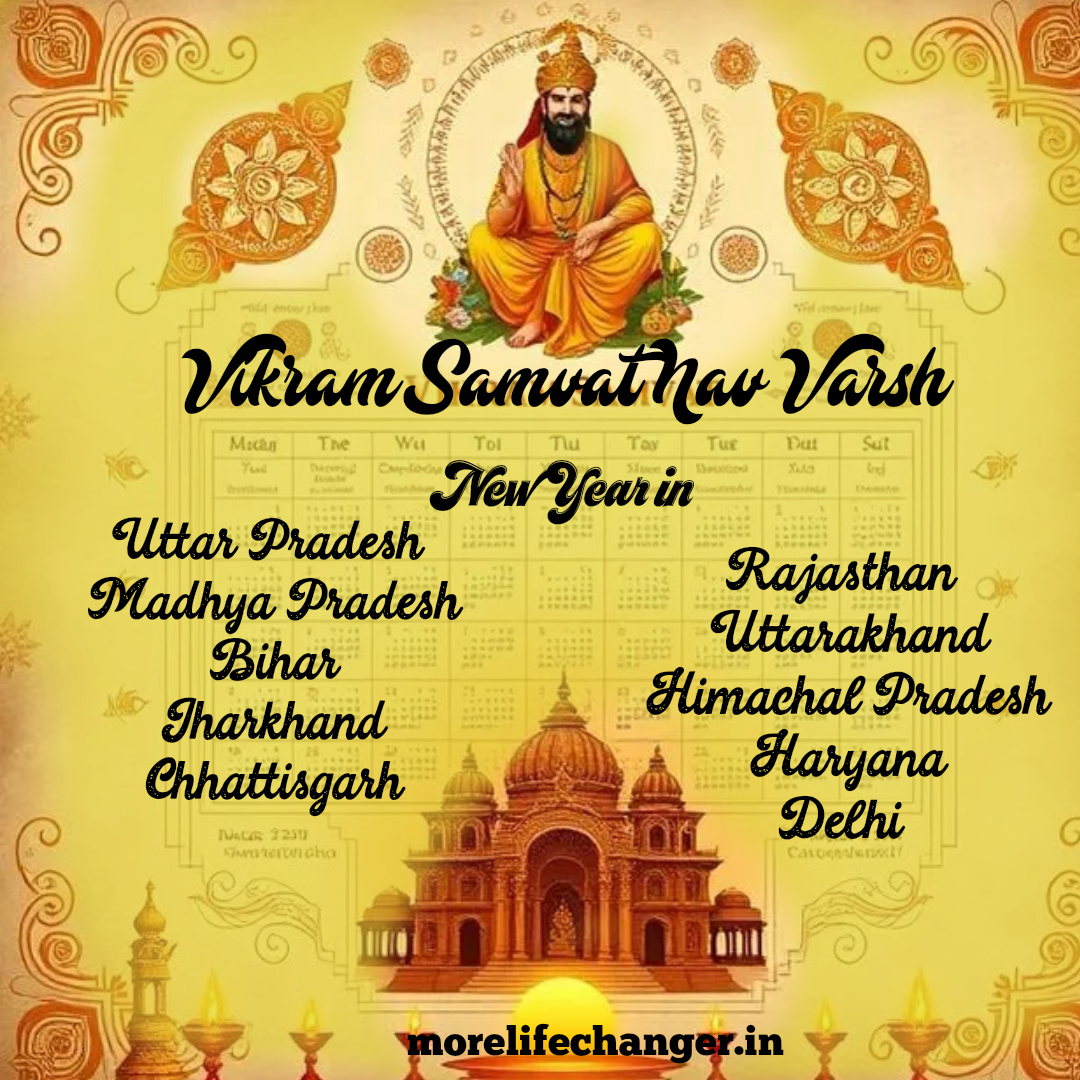Vikram Samvat New Year, also known as Vikrami New Year or Vikram Samvat is the traditional Hindu New Year based on the Vikram Samvat calendar, which is widely used in India and Nepal. It generally falls in the month of Chaitra (March-April) and is celebrated on the first day of the Chaitra month.
This calendar is a lunar-solar calendar, and the first day of the Chaitra month marks the beginning of the New Year in several parts of India. It is especially popular in the northern and western regions of India like Gujarat, Maharashtra, Rajasthan, and Himachal Pradesh. In Nepal, the Vikram Samvat New Year is the official calendar and is celebrated as Nepali New Year.
History
The Vikram Samvat calendar is a lunisolar calendar, meaning it is based on both the moon’s phases and the position of the sun. It is believed to have been started by King Vikramaditya in 57 BCE to commemorate his victory over the Sakas. As a result, it is also referred to as the Vikrami calendar.
In this system, months are calculated based on the moon’s cycles, but adjustments are made to keep the months in sync with the solar year, ensuring that the seasons remain aligned with the calendar.
Vikram Samvat New Year Date
The Vikram Samvat New Year falls on the first day of the Chaitra month, which typically aligns with March or April in the Gregorian calendar. In 2025, the Vikram Samvat New Year will fall on April 9.
The exact date may vary slightly depending on local traditions and the lunar cycle. Since it’s a lunar new year, the date may shift a bit from year to year.
Also read : Lunar New Year
Regional Celebrations
The celebration of the Vikram Samvat New Year varies by region, though the central theme of starting fresh, honoring tradition, and seeking prosperity is consistent.
Celebrations In Gujarat:
- The Vikram Samvat New Year is celebrated as Bestu Varas (Gujarati New Year). It’s a time for family gatherings, prayers for prosperity, and enjoying festive food.
- People clean their houses, wear new clothes, and visit temples to seek blessings.
- In many families, it’s customary to perform Chopda Pujan, where businessmen open new account books and perform prayers for the success of their ventures.
Celebrations In Maharashtra:
- The celebration is known as Gudi Padwa, which is marked by raising a gudi (a decorative flag on a pole) at the entrance of homes as a symbol of victory, prosperity, and good fortune.
- People wear new clothes, make traditional sweets like puran poli, and visit temples for blessings.
- The day is filled with processions, music, and dancing, bringing the community together to celebrate the new year.
In Uttar Pradesh, Himachal Pradesh, and Rajasthan:
- The day is marked by Chaitra Navratri festivals, which begin on the day of the Vikram Samvat New Year.
- Kumari Puja (worship of young girls) and other rituals are performed to honor Goddess Durga, who symbolizes power and protection.
- The community comes together to celebrate with fairs, traditional music, and folk dances.
Celebrations In Nepal:
- The Vikram Samvat New Year (known as Nepali New Year) is the official New Year of Nepal, celebrated with public holidays and various celebrations across the country.
- It typically falls in April, marking the start of the Nepali year and is celebrated with family gatherings, cultural events, parades, and performances of traditional music and dance.
- People decorate their homes, visit temples, and prepare festive meals to usher in the new year.
Spiritual Significance and Rituals
The Vikram Samvat New Year holds significant spiritual meaning in many parts of India. It is believed that the first day of the new year is a day for starting afresh, both mentally and spiritually. Many people engage in the following rituals:
- Puja (Worship): On this day, people perform a special puja (prayer ritual) at home or in temples, seeking blessings from the divine for peace, prosperity, and happiness in the coming year. In some regions, this also involves the worship of Lord Ganesha, who is associated with the removal of obstacles.
- Chopda Pujan: This is a common tradition in Maharashtra and Gujarat, where businessmen open their new account books (called Chopda) and perform a ritual worship. The idea is to invoke the blessings of Lord Lakshmi, the goddess of wealth, for a prosperous year ahead.
- Cleaning and Decoration: Homes are cleaned and decorated with bright-colored rangolis (traditional floor designs) and flowers. New clothes are bought to symbolize a new beginning, and gifts are exchanged to express goodwill and strengthen social bonds.
- Charitable Acts: Some people also donate to charity on this day, believing that acts of kindness and generosity will bring good fortune in the year to come.
Food and Sweets
The food prepared on Vikram Samvat New Year varies by region but is typically rich in flavor and often involves traditional sweets. In Gujarat and Maharashtra, some of the special foods include:
- Puran Poli: A sweet flatbread stuffed with jaggery and yellow lentils, typically prepared in Maharashtra.
- Dhokla: A steamed, savory snack made from fermented rice and chickpea flour, common in Gujarat.
- Kachori: Fried pastry filled with lentils or spiced fillings, enjoyed in many parts of India.
- Chana Pulao: A spiced rice dish often prepared in parts of North India.
In many places, imbued sweets like kaju katli (cashew sweets) and burfi are common, symbolizing the sweetness of life and the year to come.
Cultural Events
In many communities, especially in Maharashtra and Gujarat, processions and folk dances are held. For instance:
- In Gujarat, people often celebrate with Garba and Dandiya dances.
- In Rajasthan, you might see folk dances like Ghoomar or Kalbelia.
Vikram Samvat vs. Gregorian New Year
While the Gregorian New Year is widely celebrated globally on January 1st, the Vikram Samvat New Year holds more of a cultural and religious significance, deeply rooted in Hindu traditions and the lunar-solar cycle. This marks a very different new year, tied to agricultural cycles, the movement of the sun, and specific astrological events.
In comparison to the Western New Year, which often involves loud celebrations, fireworks, and parties, the Vikram Samvat New Year is more introspective, with people reflecting on the past year and seeking blessings for the future.
Please join discussion on Facebook about world facts and its secret.

